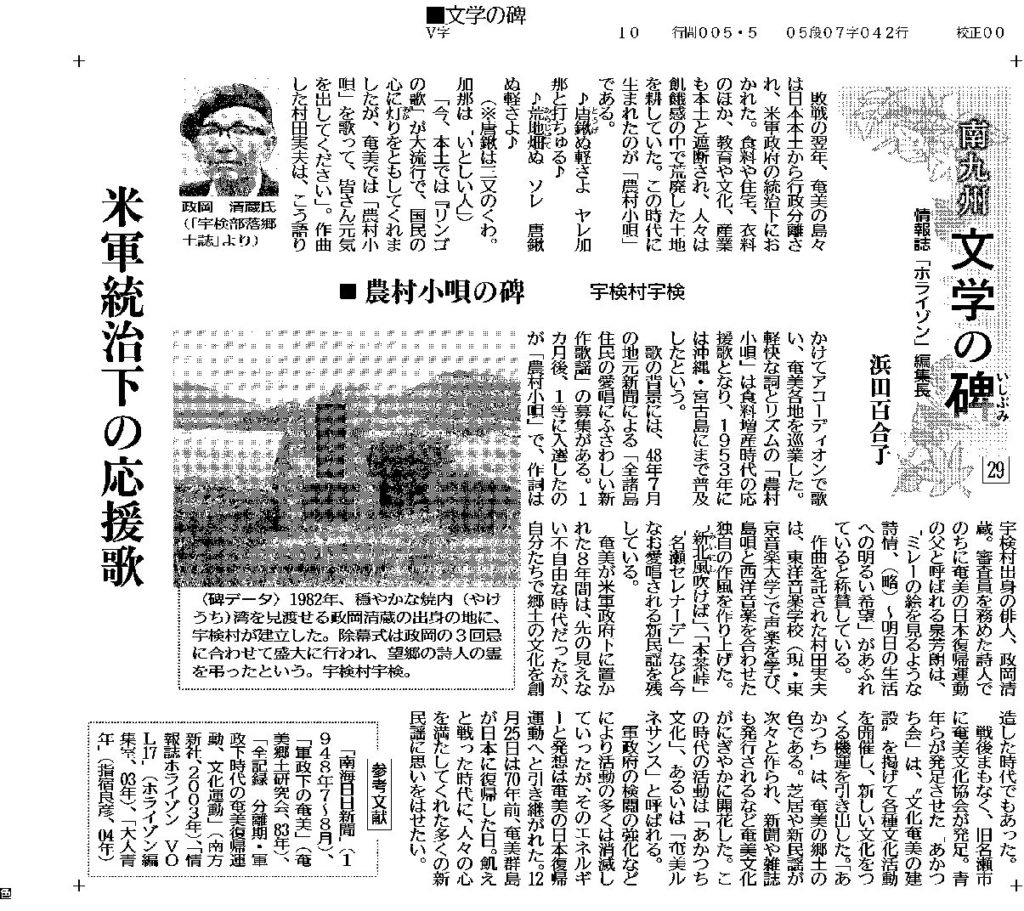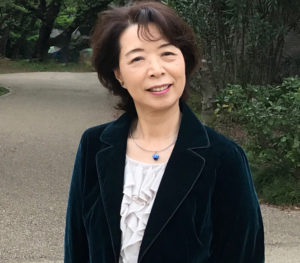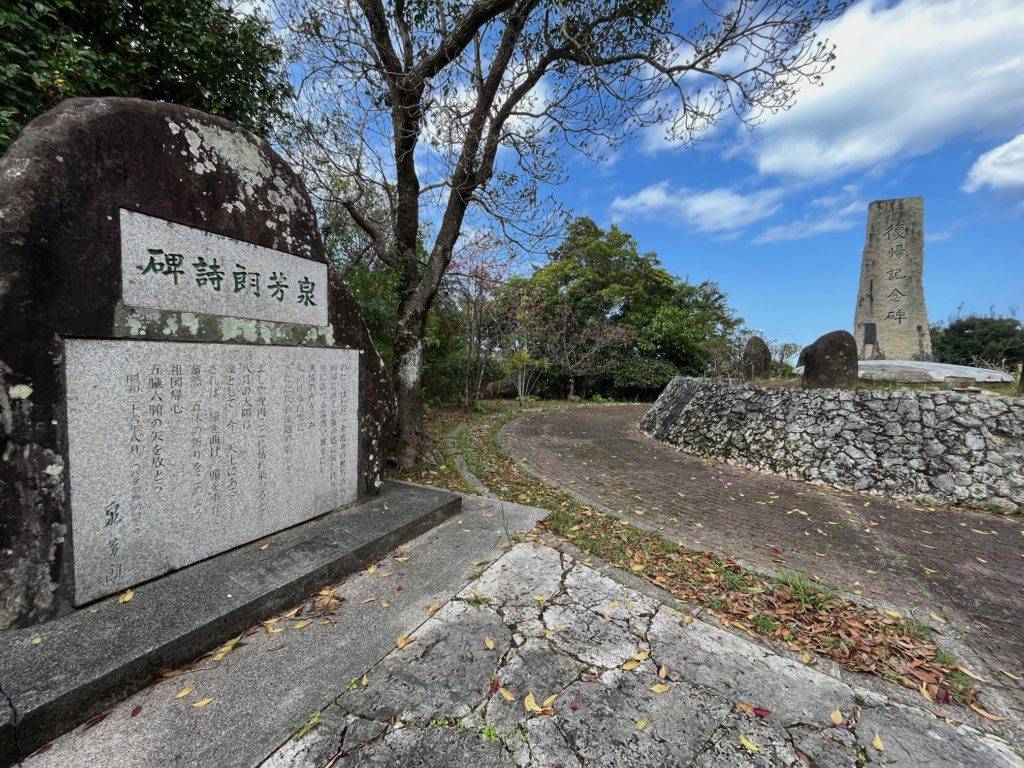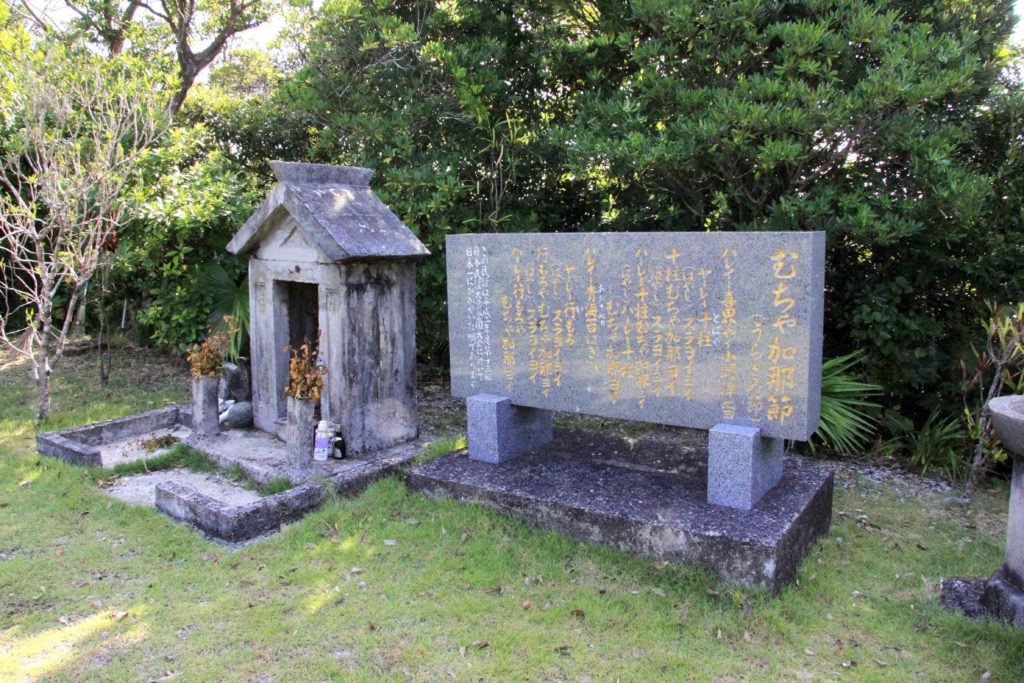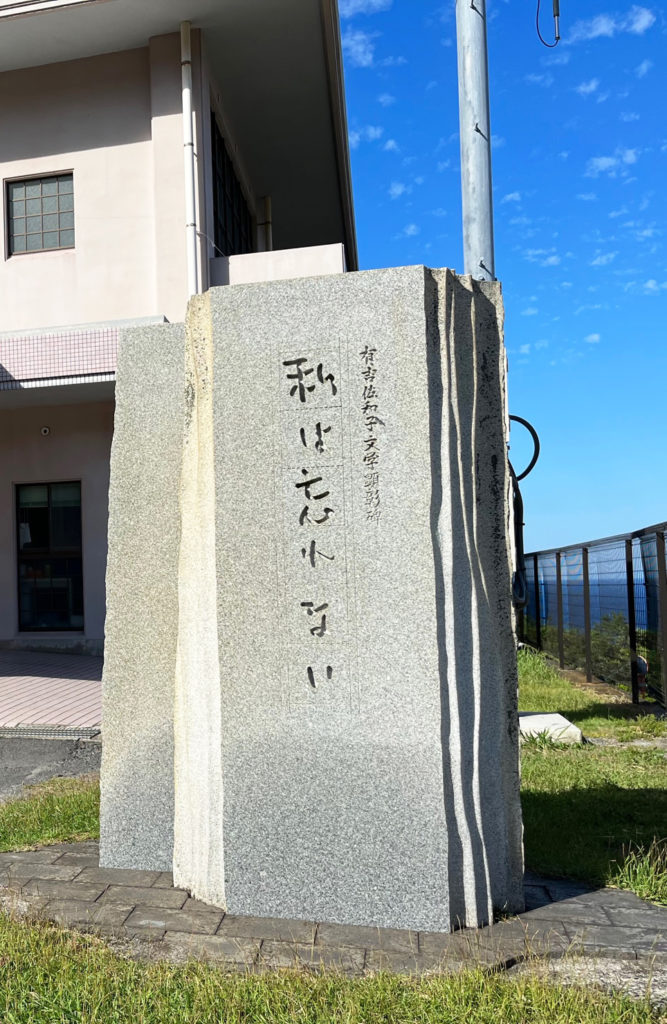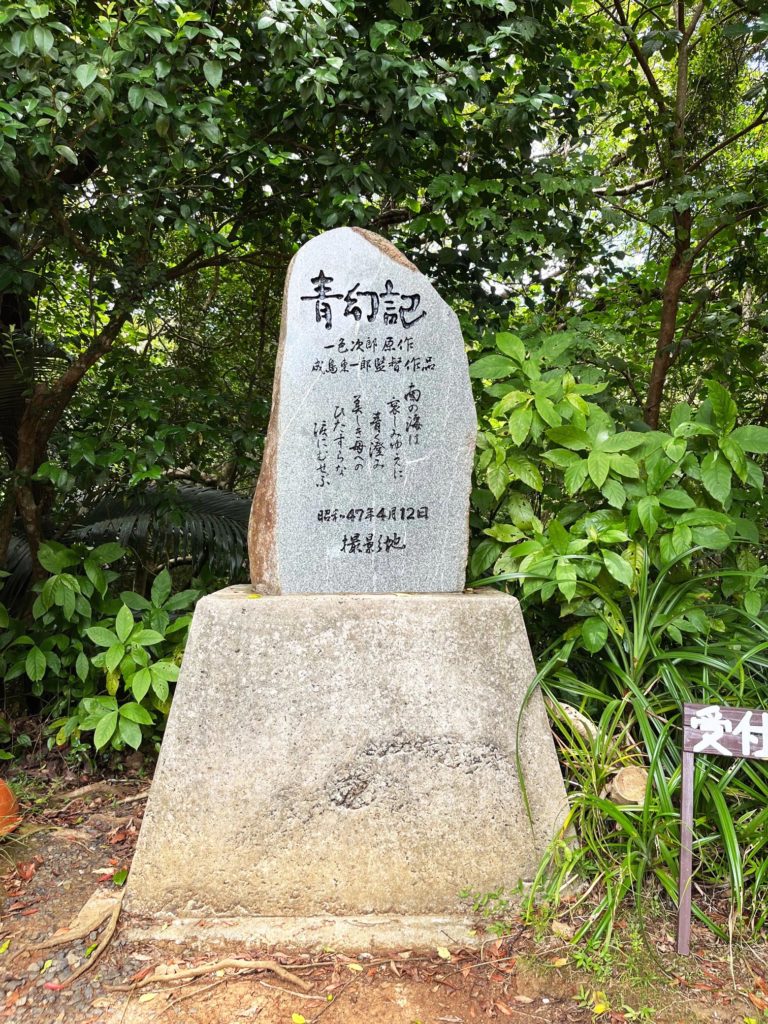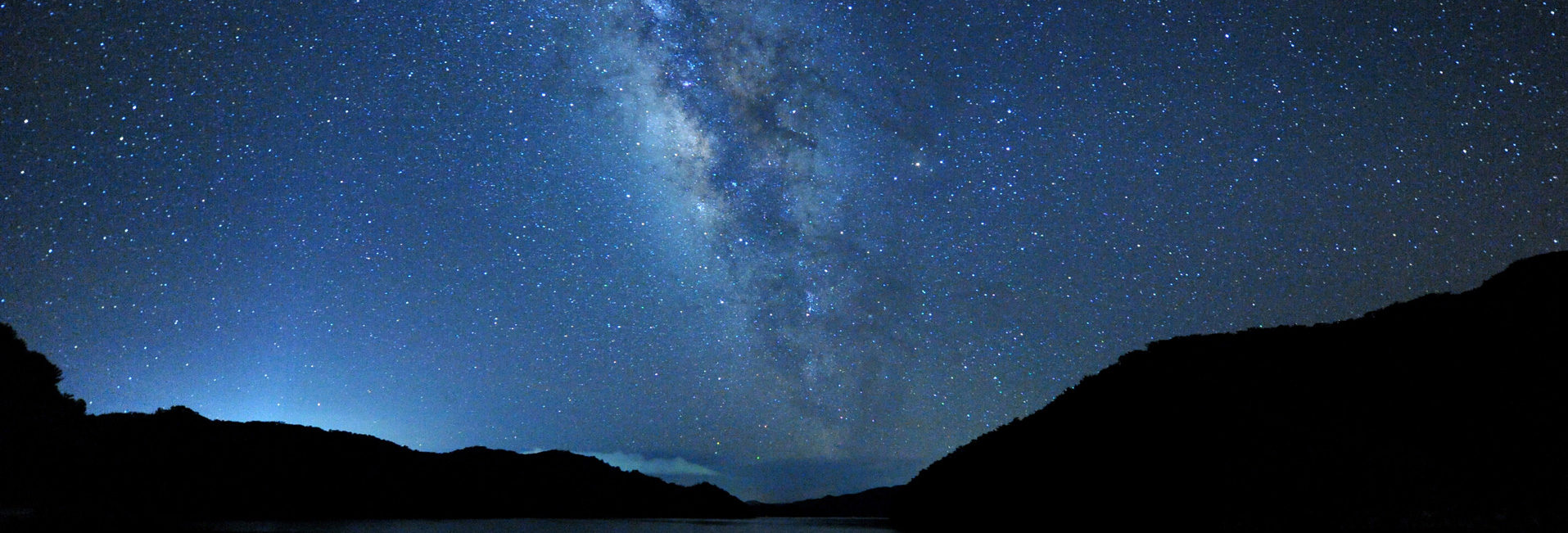
Column
Nouson Kouta
Monument of Nouson Kouta – Uken Village, Amami Oshima
A cheering song while under the rule of the American armed forces.
In the year after Japan was defeated in WWII, the Amami islands were separated from the Japanese mainland. They were placed under American government rule. Everything, including food, housing, clothes, and even education, culture, and industry were cut off from the mainland. The song Noson Kouta (Farming Village Song) was born during those times.
*Touge nu karusa yo yare
*Kana to uchuru
Arajibate nu sore touge no karusa yo
(*Touge: three-pronged hoe, *Kana: loved one)
“Hang in there, people! Ringo no Uta (The Apple Song), sung by Namiki Michiko, was so popular on the mainland that it lit a fire in their hearts. We, on the Amami islands, shall sing Nouson Kouta to light the fire in our hearts.”
Jitsuo Murata, who wrote this musical composition, toured around Japan by singing the cheering song with an accordion. The anthem, with its light lyrics and rhythm, eventually made its way to Miyakojima island in Okinawa by 1953.
The background of the song is that a local newspaper put out at call for a new pop song that would “be worthy of being loved by all the islanders”. A month later, the song which won first prize was Nouson Kouta, with lyrics written by Masaoka Seizo, a poet born in Uken Village.
The judge was Izumi Horo, who came to be called the father of the Japanese Reversion movement in Amami. He praised the lyrics, “It is as poetic as the imagery of Edna Millay. It is full of hope towards brighter lives for tomorrow.”
Murata, who was entrusted with making the music, had enrolled in Toyo Music School (currently Tokyo College of Music) and studied vocal music. He composed a unique mix of Amami shimauta folk music and western music. Some of his songs, such as Miinishi Fukeba, Honcha Touge, and Naze Serenate are still beloved and sung on the islands.
The 8 year period of inconvenience and uncertainty under American rule was also an era when islanders were creating their own unique culture in Amami. The Amami Culture Association was established soon after WWII. Additionally, “Akatsuchi-Kai”, which had been set up by youngsters in Amami, held cultural activities with the impetus to “found a cultural Amami and bring about the chance of creating a new culture”. “Akatsuchi” means “red soil”, in reference to the soil color in Amami, and “kai” means “group”. Many plays and new songs had been made, one after another, and new newspapers and magazines were published. Amamian culture was flourishing. This era of indigenous activities and movements is often called “Akatsuchi Culture” or the “Amami Renaissance.”
Many of these activities were diminished because of the enforcement of military government censorship, however, the energy and thought carried over into the Amami Reversion movement. December 25th is the memorial day of Amami returning to Japan, seventy years ago. I, the author of this article, would like to give more than a passing thought to this new era of folk songs, which filled people’s hearts in an era of fighting hunger.
Posted on Minami Nihon Shinbun ”Southern Kyushu Bungaku no Ishibumi(Monument of Literiture)”
December, 1st, 2023
References
*Nankai Nichinichi Shinbun (July-August 1948)
*”Gunseika no Amami (Amami Under Military Rule)”
by the Amami Kyodo Kenkyukai (Amami Hometown Study Group), 1983.
*”Zenkiroku Bunri-ki Gunseika Jidai no Amami Fukki Undo, Bunka Undo (Full Record: Separation Period, the Era of Amami Reversion Movement and Culture Movement Under Military Rule)” published by Nanposhinsha, 2003.
*Amami Horizon vol. 17, published by Amami Horizon, 2003.
*”Otona Seine (Adult Youth)” by Ibusuki Yoshihiko, 2004.
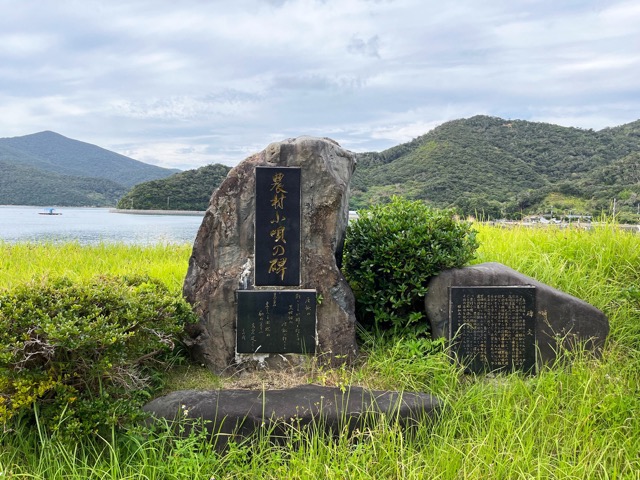
*Monument of Nouson Kouta
It was built in 1982 by the people in Uken Village, the hometown of Masaoka Seizo, at the Yakiuchi Bay. The unveiling ceremony was held grandly on the third anniversary. It was said that people mourned the soul of their fellow poet.
